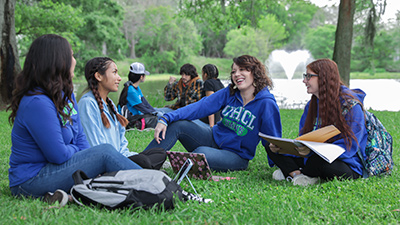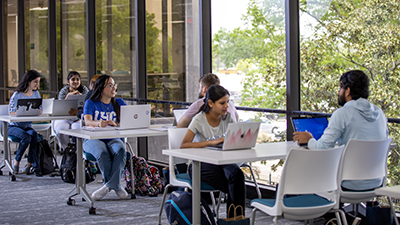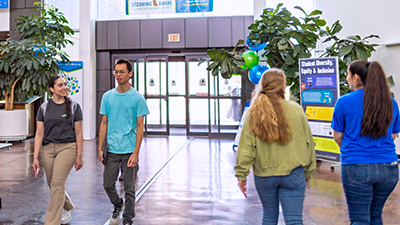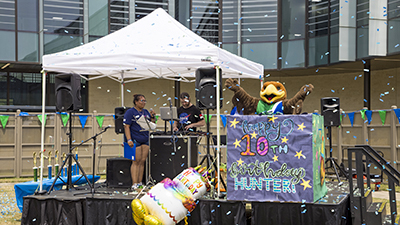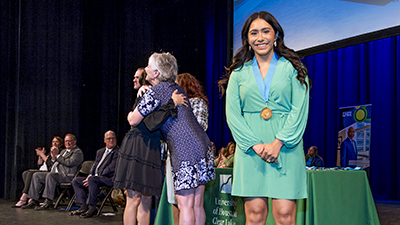
Alumni Highlight
A Conversation with Jeff Fato
By Rowena McDermid, Environmental Education Assistant
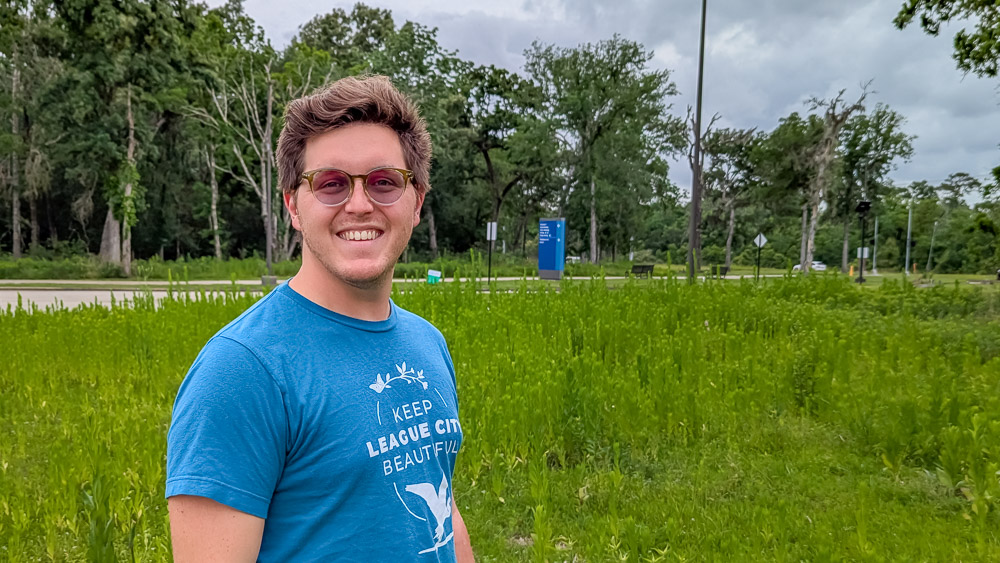
EIH alumnus Jeffrey Fato, ’21 BS, ’25 MS, shares insights from his early career journey in environmental work. He recently sat down with Rowena McDermid to reflect on his time at the Environmental Institute of Houston, his transition to the Galveston Bay Foundation, and how his role has evolved into managing multiple restoration projects around the bay.
Rowena: Thank you for taking the time to chat today, Jeff. Let’s start at the beginning—remind me, when did you graduate?
Jeff: I graduated in the summer of 2021 with my bachelor’s degree, and I’ve just wrapped up my final course for my master’s degree.
Rowena: And was it the summer of 2021 when you started working with us?
Jeff: It was the following summer when I started as an intern and graduate research assistant on your project. After that, I was hired onto the education team as a student technician. It was a role where I got to do a bit of everything, and I really enjoyed it.
Rowena: After your time here, you found a position with Houston Parks, correct?
Jeff: Yes. After leaving EIH, there was a habitat restoration manager position that opened up with the Houston Park System. Ultimately, it didn't work out. I took a couple of months off and then, in September of that year, I was hired by the Galveston Bay Foundation.
Rowena: What is your current job title with the Galveston Bay Foundation?
Jeff: It’s different from when I started. Now, I am the habitat restoration manager for the Galveston Bay Foundation. I oversee about eight projects and manage around nine different federal and state grants. I’m finally feeling like I’m getting my footing and making a real impact. When I first started, though, I was doing similar work to my student technician role at EIH. I was hired onto the land conservation team as a seasonal technician, and by the start of the following year, I was brought on full-time as the land conservation technician lead, which I did for all of last year before getting my recent promotion to manager.
Rowena: Congratulations again on your promotion. Was this the kind of role you were aiming for after getting your degree, or do you have other aspirations?
Jeff: That’s a great question. It’s one of the first positions where I feel like I’ve truly landed where I’m meant to be. It’s like in archery, they talk about aiming at your target and readjusting with each shot. With previous jobs, I felt like I hit the target but not quite the mark. While I don’t have a specific “end-all, be-all” job in mind, I can see myself here for a long time, making a significant positive impact.
Rowena: That perspective often comes with more experience, understanding where resources go and what’s truly important.
Jeff: Absolutely. That’s something I’ve learned a lot about in this role. Working in habitat restoration and land conservation, and now in a management position, I feel like I can really utilize everything I’ve learned so far. I truly appreciate that, having worked hard for my degree and these experiences.
Rowena: You mentioned working on eight different projects around the bay. What kind of projects are those?
Jeff: The majority of my projects focus on shoreline erosion and protection. We aim to implement solutions that achieve this while also revitalizing other resources within the bay. For example, one current project is along the Gulf Intracoastal Waterway in an area called Greens Lake. It’s a classic living shoreline. We’ve built a breakwater from recycled green concrete, and we’re now at the stage where we’ve established initial protection and sediment accretion. My next step is to plant Spartina alterniflora, the smooth cordgrass, or marsh grass as it’s commonly known here. Most of my projects follow this pattern: acquiring sites, working with landowners, securing funding, collaborating with engineering firms on site-specific designs, and then managing the bidding and contractor process to create these living shorelines. Fortunately, my past experiences, like field biology with Dr. Howard’s classes, ecology and conservation field trips, and even the vegetation surveys for the UHCL Nature Trail project, have provided a strong foundation. I find myself using those skills, like vegetation monitoring, all the time, and I often think back to those learning experiences we shared.
Rowena: Can you share a good memory from your time working here?
Jeff: There are so many! It was hard work, and we had our share of sweaty days. One of my favorite memories is when we first seeded the two prairies. It was really cool, and I’m so glad I skipped class to see the seed drill in action – that was special. Also, the effort of setting up that supplemental prairie planting and seeing so many people come out to Entrance 2 to help and witness the difference we were making. I can’t tell you how often I’ve run into master naturalists who were there, and it’s still what they talk about when they see me. I really value having had that kind of hands-on experience as a student.
Rowena: Looking 10 years down the line, where do you see yourself?
Jeff: If I’m still working at GBF, continuing to restore habitat and help with projects like Marsh Mania, I would be happy. I feel like I’m in a good place career-wise, and while I’m open to future opportunities, I also think it’s time for other aspects of my life to take greater priority.
Rowena: Thank you, Jeff.
